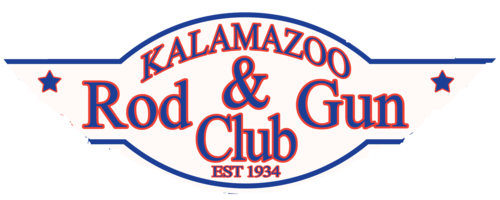ABOUT
Who we are
Kalamazoo Rod & Gun Club
and are outdoor enthusiasts. 1,500 members strong.
The club was founded in 1934 as the Michigan Trout Club with ten members present at the first meeting. The purpose of the organization was to foster restocking of local streams and lakes to improve fishing. For many years before the State expanded its fish stocking program, the club was already active in planting fish, some furnished by the Department of Conservation and some raised by the club. When Pheasants were introduced, the club raised and released birds to bolster the State program in this area. In cooperation with farmers, the club planted hardwood and softwood trees on unused farm land to conserve soil and improve game habitat.
By 1953 the interests of the club had broadened out so that the original name, Michigan Trout Club, covered but a small part of the Club’s activities. The name was then changed to the Kalamazoo Rod & Gun Club.
As membership grew over the years it became apparent that a central headquarters for the club was needed. This led to the purchase in 1955 of the old Brook Farm School on Douglas Avenue. The school house made a good meeting place but the one acre lot was too small for any outdoor activity. In 1956 the need for more land was recognized and the search began for a suitable parcel. In 1957 the site of the current clubhouse was purchased. Construction of the clubhouse was started early that summer. Having sold its Douglas Avenue property the club was forced to use temporary meeting quarters in the old.
#4 firehouse at Burdick and Ransom Streets near downtown Kalamazoo. The first meeting in the new clubhouse was held early in 1959. Initially, the fireplace was the sole source of heat for the building. Construction was substantially complete in the spring of 1960. Regular use by archers, rifle, and pistol shooters started the following winter and continues to the present.
An expanding archery program demanded still more land, so some 50 acres north of the clubhouse was rented for archery use. The tenuous nature of the lease led to the purchase of an additional 40 acre parcel west of the original 10 acres, giving the club a total of 50 acres.
Through the 1960’s the primary interest in the club seemed to be archery with a 56-target course and a 25-target broadhead course on the rear 40 acres. A 100-yard rifle range was located where the pole barn is now. Also a manual trap machine was located where our electric trap is now.
During the early 1970’s interest in archery seemed to wane and membership hit a low. New members who had an interest in rifle and pistol shooting began to join the club. This in turned led to the construction of a new 200-yard rifle range in 1976. The late 70’s also saw construction of a new pistol range where the pole barn is now located.
The 1980’s saw continued growth in the club membership. The rifle range was widened and a covered firing line constructed. In 1989 the lower pistol range was closed and the current 25-50 yard range was built to replace it.
The year 1992 marked a milestone in growth. Fifty acres of land adjacent to the north property line of the club came up for sale. The Board of Directors held an emergency meeting and determined it was essential to the future operation of the club that we purchase this land. The club treasury didn’t have the necessary funds for a sizeable down payment, so it was decided that we would appeal to the membership for donations. The membership responded through a mail-in fund raising campaign and we came up with a sizeable down-payment. Then with a generous land contract offered by the owner, the club was able to obtain this 50 acre parcel and double the size of the club’s land holdings to the current 100 acres. Membership continued to rise during the 1990’s.
The new millennium saw more changes. With the State of Michigan passing CCW reform, interest in short range pistol practice grew. The club responded with the construction of two new pistol ranges. Membership continues to grow year over year. 2021 brought the addition of 108 acres of vacant land to the west. Purchased as part of a forestry program, this land is limited use as a buffer from future development.
